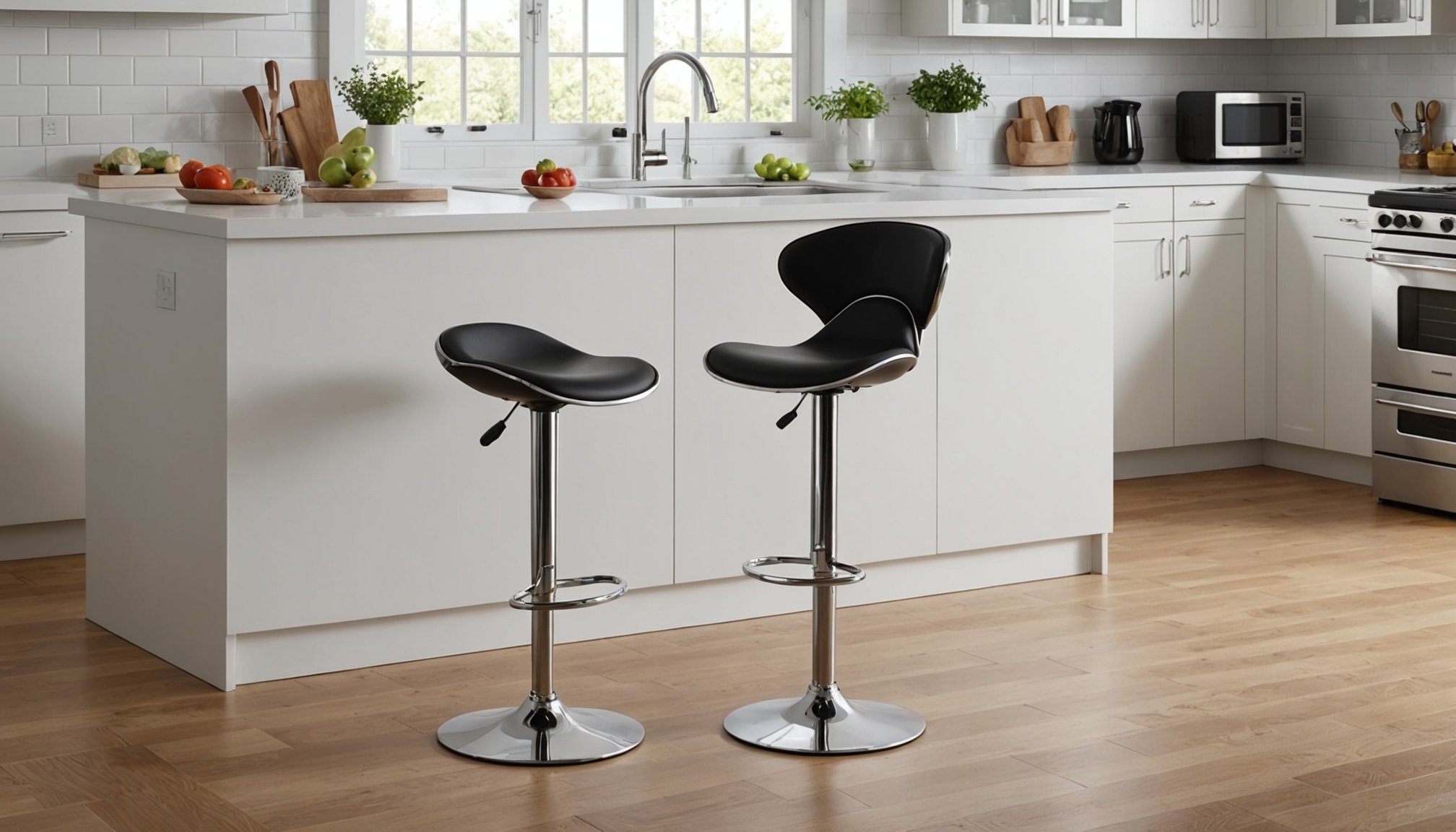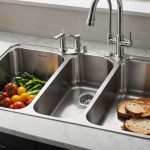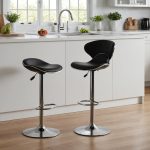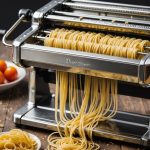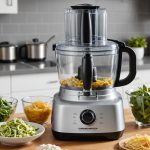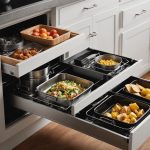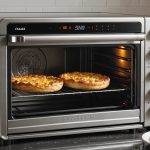Selecting the right kitchen stool goes beyond aesthetics. It can significantly impact your posture and digestion. Ergonomically designed stools offer support that promotes healthy sitting habits, reducing discomfort during meal preparation and dining. Discover key features that enhance not just your kitchen's design but your overall well-being. Embrace a supportive seating option that helps you maintain an upright posture and facilitates better digestion for a more enjoyable culinary experience.
Understanding Ergonomic Features in Kitchen Stools
Exploring the essentials for comfort and health.
Also read : Choosing the Ideal Sink for a Lean Kitchen: Streamline Meal Cleanup and Minimize Food Temptation
Importance of Seat Height
Ergonomic kitchen stools are essential for maintaining proper posture. The seat height plays a crucial role in ensuring comfort. It should allow your feet to rest flat on the ground, promoting a natural sitting position. A seat that's too high or too low can lead to discomfort and strain over time. A simple way to determine the ideal seat height is by measuring the distance from the floor to the underside of your knee.
Role of Lumbar Support
Lumbar support is vital in reducing back strain. Ergonomic kitchen stools with built-in lumbar support help maintain the natural curve of your spine. This feature is especially beneficial during extended periods of sitting, as it helps prevent slouching. Proper lumbar support can alleviate lower back pain, making it a key consideration when choosing a stool.
Have you seen this : Discover Ideal Kitchen Island Dimensions for Healthy Meal Prep Success
Impact of Footrest Design
The design of a stool's footrest significantly impacts comfort and circulation. A well-positioned footrest allows for a relaxed posture, reducing pressure on the legs. This can enhance blood flow, preventing numbness and discomfort. When evaluating ergonomic kitchen stools, ensure the footrest is at a comfortable height and depth.
- Key Considerations:
- Adjustable seat height
- Integrated lumbar support
- Thoughtful footrest design
By focusing on these features, you can ensure your kitchen stools provide both comfort and health benefits.
Selecting the Right Kitchen Stool
Choosing the right kitchen stool involves understanding various factors that contribute to both functionality and style.
Determining Ideal Seat Height
Determining the ideal seat height is crucial when choosing kitchen stools. The correct stool height ensures comfort and promotes proper posture. Consider measuring the distance from the floor to the underside of your knee to find the perfect height. Typically, the seat height should be about 10 to 12 inches below the counter for optimal comfort.
Evaluating Design Options
When evaluating design options, consider both aesthetic appeal and functionality. The design should complement your kitchen decor while offering practical features. Look for stools with adjustable height, swivel bases, or backrests for added comfort. Remember, the design impacts not only the look but also the usability of the stool.
Considering Material and Build Quality
Material and build quality are essential considerations in choosing kitchen stools. Opt for durable materials like metal or high-quality wood that can withstand daily use. Consider upholstery options that are easy to clean and maintain, especially in a kitchen environment.
- Key Considerations:
- Ideal seat height
- Functional design options
- Durable material and build quality
By focusing on these elements, you can select kitchen stools that offer both style and comfort, enhancing your kitchen experience.
Health Benefits of Ergonomic Kitchen Stools
Exploring the connection between design and well-being.
Connection Between Stool Design and Spinal Alignment
Ergonomic kitchen stools are designed with improved posture in mind, which is crucial for maintaining spinal alignment. A stool that supports the natural curve of your spine can significantly reduce back strain. This alignment not only enhances comfort but also supports digestion by allowing organs to function without compression.
How Improved Posture Aids Digestion and Reduces Discomfort
Sitting with improved posture aids in digestion by ensuring that your internal organs are not compressed. When your spine is aligned correctly, it facilitates better blood flow and reduces the risk of discomfort. This is particularly important during meals, as a relaxed posture can prevent common digestive issues.
Long-Term Health Benefits of Ergonomic Seating
The long-term health benefits of using ergonomic kitchen stools include reduced risk of chronic back pain and improved digestive health. By consistently using stools that promote improved posture, you can enjoy enhanced comfort and well-being. Over time, this can lead to a healthier lifestyle, as proper seating supports overall physical health.
Key Benefits of Ergonomic Stools:
- Improved spinal alignment
- Enhanced digestion
- Long-term comfort and health benefits
By incorporating ergonomic stools in your kitchen, you can significantly improve your daily health and comfort.
Product Recommendations and Reviews
Exploring the best ergonomic kitchen stools and user insights.
Top Ergonomic Kitchen Stools on the Market
When searching for the best kitchen stools, consider models that prioritize ergonomic seating. The "ComfortPro" series offers adjustable heights and integrated lumbar support, making it a top choice for those seeking comfort and style. Another popular option is the "ErgoFlex," known for its durable build and swivel base, enhancing usability and flexibility.
User Reviews and Experiences
User feedback highlights the importance of ergonomic seating in kitchen stools. Many customers praise the "ComfortPro" for its supportive design, noting reduced back pain during prolonged use. The "ErgoFlex" also receives accolades for its adjustable features, which allow for personalized comfort. Users appreciate how these stools blend seamlessly with various kitchen aesthetics.
Comparison of Features and Prices
Choosing the right stool involves comparing features and prices. The table below provides a quick overview:
| Model | Features | Price |
|---|---|---|
| ComfortPro | Adjustable height, lumbar support | $150 |
| ErgoFlex | Swivel base, durable build | $130 |
Both options offer ergonomic seating at competitive prices, ensuring a balance between quality and affordability. By evaluating these best kitchen stools, you can make an informed decision that enhances both comfort and style in your kitchen.
Practical Tips for Enhancing Kitchen Comfort
Discover how to elevate your kitchen experience with ergonomic adjustments.
Adjusting Stool Height for Personal Comfort
To optimize kitchen comfort, it's essential to adjust your stool height to suit your personal needs. Ensure the stool allows your feet to rest flat on the ground, promoting a natural posture. This can be achieved by measuring the distance from the floor to the underside of your knee and selecting a stool that matches this height. Consistent adjustments can significantly enhance comfort during meal preparation and dining.
Incorporating Movement and Breaks While Cooking
Integrating movement and taking regular breaks are crucial for maintaining kitchen comfort. Prolonged periods of standing or sitting can lead to fatigue and discomfort. Consider setting a timer to remind yourself to stretch or walk around every 30 minutes. This practice not only boosts circulation but also refreshes your mind, making cooking a more enjoyable experience.
Maintaining Proper Posture While Seated at the Counter
Proper posture is a cornerstone of kitchen comfort. When seated at the counter, ensure your back is straight and shoulders are relaxed. A helpful tip is to imagine a string pulling you upwards from the top of your head. This visualization can aid in maintaining an ergonomic posture, reducing strain on your back and neck over time.
- Key Tips:
- Adjust stool height
- Incorporate movement
- Maintain proper posture
By focusing on these ergonomic adjustments, you can greatly enhance your overall kitchen experience.

